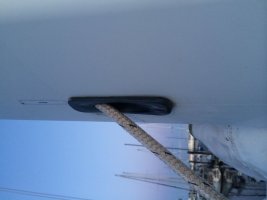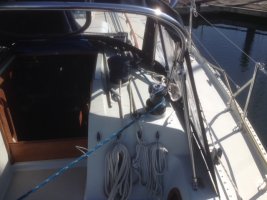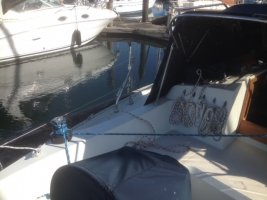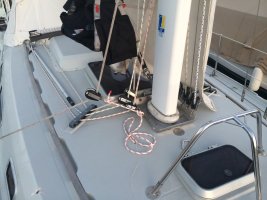Hi,
I'm trying to figure out a way to run my main halyard back to my large primary winch to make hoisting the chair easier. If I just take it straight back across the cabin top, the downward angle of the line causes an override on the winch. If I take it to the starboard side genoa car, the halyard rubs on the cabin top and handrail, causing too much friction.
I'm just curious how other people are addressing this...
mark
I'm trying to figure out a way to run my main halyard back to my large primary winch to make hoisting the chair easier. If I just take it straight back across the cabin top, the downward angle of the line causes an override on the winch. If I take it to the starboard side genoa car, the halyard rubs on the cabin top and handrail, causing too much friction.
I'm just curious how other people are addressing this...
mark








